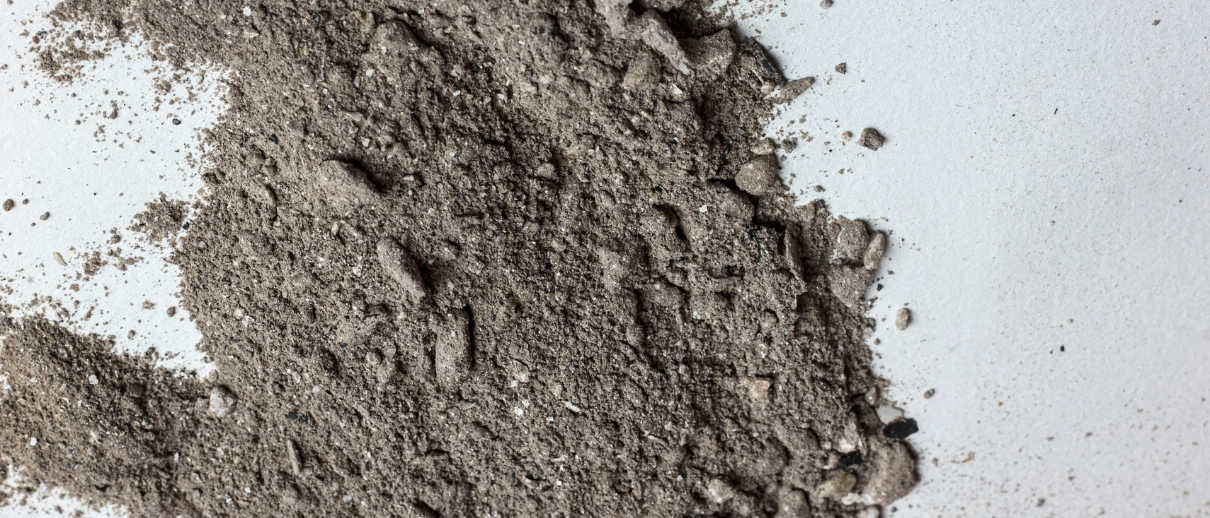Eating Cremated Human Remains: Recent Reports Raise Lots of Questions
One of the reasons South Park fans love the raunchy adult-themed cartoon is because the scenarios portrayed are outrageous, offensive, and unrealistic … and funny. Take the 2002 “Ladder to Heaven” episode, for example, where the Kenny character dies (as he often does) and Cartman accidentally drinks Kenny’s cremains in chocolate milk, causing Kenny’s soul to get trapped in Cartman’s body. It’s a ridiculously hilarious concept, because of course that would never happen in real life … Right?
Sadly, it has. Several fairly recent cases have highlighted the practice of people ingesting human ashes … on purpose.
Stranger than fiction
In 2018, a California high school student mixed her grandfather’s cremains into homemade sugar cookies, later serving them to nine of her classmates. Some of the students told authorities that although the cookies seemed “sandy-textured,” they didn’t initially believe that the girl was telling the truth about her “special ingredient,” which she shared, laughing, after they tasted the cookies.
“I didn’t believe her until she pulled out the urn,” said one of the students. “She told me there’s a special ingredient in the cookie. I thought that she put drugs in it or something.”
Police investigated the incident, and later confirmed that the cookies did indeed include human cremains. However, there were no laws in place that could lead to criminal charges. Even an obscure law about mishandling human remains didn’t seem to apply. So, discipline was left up to the school and the girl’s parents.
A similar story hit the headlines in late May when an Australian woman admitted on a morning radio show that she and her mother had eaten some of her grandmother’s cremains, then secretly added them to her brother’s dinner.
“So I thought it would be funny to prank him … and I put some of Nan’s ashes in the pasta sauce,” the woman told the radio hosts. As for her and her mother’s partaking, she said “I went over to Mum’s one night and thought to cheer her up a bit … let’s just taste nan. After I did it once, I got mom to do it because I didn’t want to be alone in it.”
Assorted motivations
You might expect this kind of activity from exhibitionist rockstars or ritualistic cult members, but high school students and suburban moms? What’s going on here?
In these two stories, attention-seeking seems to be the primary motivation, along with the perceived satisfaction from successfully pranking an unsuspecting person. Only the people involved know if the reward from eating a loved one’s remains was worthwhile.
But these two individuals aren’t the only people who have recently admitted to ingesting a family member’s cremated remains — and for very different reasons.
In 2021, a 26-year-old Tennessee woman admitted she has an addiction to licking her late husband’s ashes from her fingers. Appearing on the TLC channel reality show “My Strange Addiction,” she explained that one day she touched the ashes and some of the substance stuck to her fingers. Not wanting to “wipe him off,” she licked her fingers — and as of the date of the interview, she had consistently repeated the practice for two months. Although she doesn’t like the taste, she likes the feeling the activity provides.
“When I open up the urn I get a sense of happiness, it’s like an adrenaline rush for me and the more I eat the more excited I get until I realize there’s not a lot left,” she said. Fortunately, the woman checked herself into a psychiatric facility after the show aired.
Lastly, in 2020, a performance artist in New York live-streamed a “12-hour durational piece” called “Salt, Fat, Ashes, Heat” during which she cooked and ate “three kinds of food that, she says, will be made using the bones and ashes of her late father’s cremated remains.” She claimed that her performance would be “healing and instructive” and would help her process her own grief.
Cannibalism or no?
In a Q&A about her program, the performance artist cited the “endocannibalistic approaches” of some cultures that involve taking the bones of the deceased and breaking them into smaller pieces “in the way that life broke down.” She also mentioned cultures that “make wines, or mix the ashes with water; other folks cook or just eat pieces of the heart or the flesh.”
Endocannibalism, or the consumption of a member of one’s own family, tribe, or community, isn’t at all an abstract concept. Since the earliest human history, some populations ritualized the process of eating human remains; some cultures still practice endocannibalism even today. Rationale for the action include the belief that those who consume will inherit the deceased soul or strengths or that this is a way to keep a loved one with them at all times. In some instances, body parts were consumed as medications for a variety of ailments.
Of course, when modern-day Americans hear the word “cannibalism,” most think about either the last-ditch survival efforts of the doomed Donner party of emigrants stranded on a California trail in 1846 or the 1972 rugby players whose plane crashed in the Andes mountains. Others might think of the more recent case of Milwaukee serial killer Jeffrey Dahmer, who ate portions of the bodies of up to 15 of his 17 victims.
In any case, people in today’s Western culture predominantly think that consuming human remains in any form is vile, abhorrent, horrific, disgusting, and/or ethically and morally wrong. Obviously, though, that’s not the case for everyone.
It’s not illegal … in most places
While consuming human remains in any form, even cremated remains, seems unethical and immoral, it’s actually not illegal in most of the United States … technically.
According to Cornell Law School, “there are no laws against cannibalism per se, but most, if not all, states have enacted laws that indirectly make it impossible to legally obtain and consume the body matter.” For example, an Oklahoma statute includes “any act committed to cause the dead body to be devoured” as “desecration of a human corpse,” which is illegal.
Even with laws like these, though, the legality of the act might depend on interpretation. In the case of the California cookie baker, authorities couldn’t fit the high school student’s actions “into any crime section.” They also said her actions weren’t a “heinous or serious crime” and “there was no public health risk either.” That’s actually true; medical experts say the only health risks in consuming human remains might come from ingesting brain tissue — not bones, flesh, or cremated remains.
This February, Idaho lawmakers gained attention for their efforts to expand the state’s cannibalism laws in an effort to block the legalization of natural organic reduction (NOR). Idaho, according to Brittanica.com, is the only U.S. state with legislation that “discusses cannibalism explicitly;” conviction on a charge of cannibalism carries a prison sentence of up to 14 years.
After seeing a clip from a TruTV spoof/prank show in which someone pretended to trick another person into eating human remains, Idaho representative Heather Scott introduced a bill that “would add to Idaho’s prohibition of cannibalism a ban on giving someone else ‘the flesh or blood of a human being’ without that person’s ‘knowledge or consent.’” Scott indicated that people would use the compost material from NOR to grow food — a practice that is specifically prohibited in the NOR regulations in states where the practice has been legalized.
What should you do?
It seems astonishingly ridiculous for any deathcare professional to be concerned that the families they serve will use the precious, sacred cremains of a loved one in a cookie recipe, as a secret eating addiction, or even as an entree in performance art. And chances are that if your families were partaking in these unusual activities, you’d probably be the last to know.
Hopefully, there will never come a time when it becomes necessary to add a “not for human consumption” label on temporary cremains containers or urns. In the meantime, at least now you know that, unfortunately, consuming the ashes of a loved one is, sadly, a thing.




